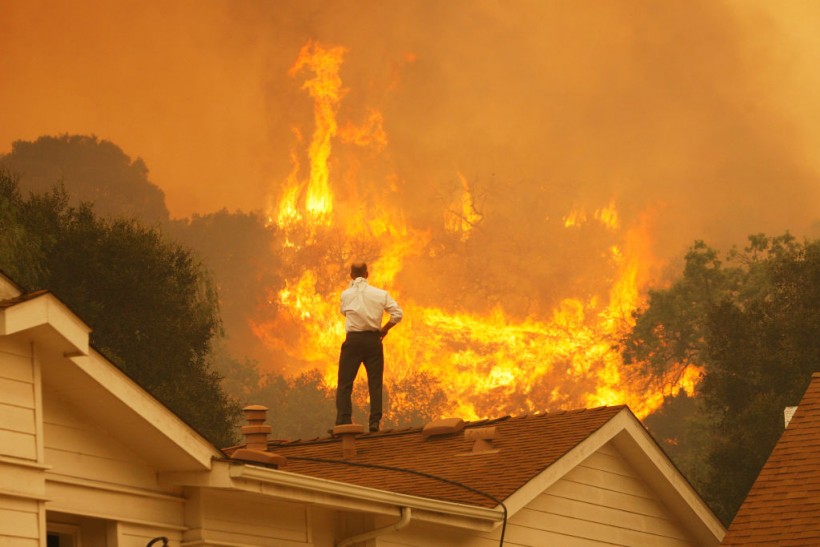McGill University scholars carried out research regarding the association of wildfires with lung and brain cancer. According to the study, it is likely to detect tumors in people who are extremely exposed to the catastrophe, and the development of the health problems depends on the proximity of patients to these forest fires.
The institute's investigation covered datasets from more than two million Canadian citizens that were gathered for a span of 20 years.
Wildfires and Its Effects on Surrounding Communities

CAMARILLO, CA - MAY 3: A man on a rooftop looks at approaching flames as the Springs fire continues to grow on May 3, 2013 near Camarillo, California. The wildfire has spread to more than 18,000 acres on day two and is 20 percent contained.
McGill's Department of Epidemiology, Biostatistics, and Occupational Health expert Scott Weichenthal, who served as co-author of the study, explained in the institute's press release that wildfires are more likely to occur in the same locations per year.
However, there is limited information as to how these forest fires influence the long-term health status of the population surrounding the areas, the expert continued.
Weichenthal said that their study was able to identify the impacts of wildfires on people around it. The investigation heavily anchored on the proximity of the residents to the fires, and showed how the distance dictates the risk of cancer types.
According to the paper, individuals who live within the 50-kilometer area of the wildfires for more than 10 years have a 10 percent more chance of developing brain tumors, and 4.9 percent more likely to get lung cancer, as opposed to people living in farther communities.
Because of the abnormal shifts in the planet's climate, experts say that there are higher chances of wildfire occurrence in many forests, and this might lead to a surge of multiple health risks and contribute to further pollution of water and air.
ALSO READ: Histotripsy: Non-Invasive Liver Cancer Treatment by Sound Waves Developed
A report by CBC News said that the US Centers for Disease Control and Prevention (CDC) found in 2018 that the drinking water available in California's Paradise town incurred contamination due to the state's largest wildfire of the year. The agency discovered that the region's water had massive amounts of benzene, a hydrocarbon compound that is highly associated with cancer.
Risk of Cancer Development in People Near Forest Fires
Due to the exposure of people to the same wildfire hotspots each year, the members of these communities could constantly inhale or ingest carcinogenic pollutants brought by the events.
Weichenthal's fellow McGill specialist and lead author of the research Jill Korsiak explained that forest fires commonly emit human carcinogens, and these pollutants could be the highest risk factor of cancer in groups near the area, ScienceDaily reports.
Due to wildfires that exceeded over 200 events across British Columbia during the past summer season, experts carried out a separate study on public safety and recommended the utilization of N95 face masks during any outdoor activities.
Weichenthal's team said that further research is required in order to identify other pollutants that are produced during wildfires and their corresponding impacts that could induce chronic health problems in people near the vicinity.
The study was published in The Lancet Planetary Health, titled "Long-term exposure to wildfires and cancer incidence in Canada: a population-based observational cohort study."
RELATED ARTICLE: AI Predicts Early Pancreatic Cancer Development Using CT Scans for Abdominal Pain
Check out more news and information on Cancer in Science Times.














